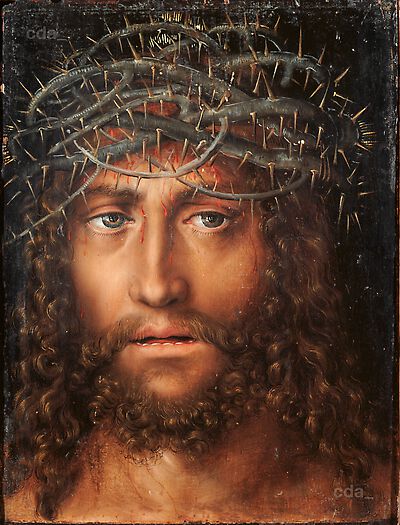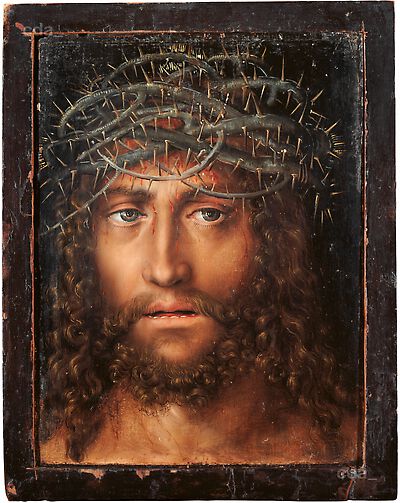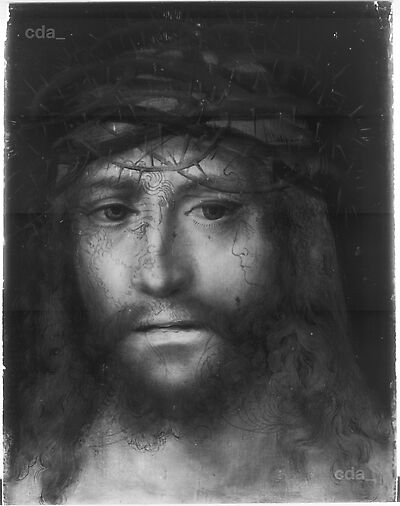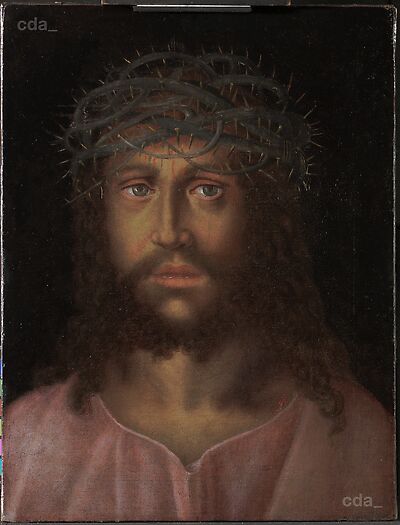This devotional image in the tradition of a vera icon, depicting the head of Christ with the crown of thorns against a black background, was conceived to be viewed close-up. The crown of thorns occupies the upper third of the pictorial space and each thorn Christ had to endure during
This devotional image in the tradition of a vera icon, depicting the head of Christ with the crown of thorns against a black background, was conceived to be viewed close-up. The crown of thorns occupies the upper third of the pictorial space and each thorn Christ had to endure during his martyrdom is worked-up with minute attention to detail and convincing plasticity. Moreover the pale red blood of the wounds underlines the Redeemer¿s passion. Unusually intimate is the feature of the slightly open mouth that shows a veristic representation of the teeth. Certain details in the composition are in motion like the slight turn of the face to the left and the gaze in the opposite direction, which create the impression of a snap-shot. The highlights on the drops of blood and in the pupils lend the small image a powerful spatial presence. In the practice of faith a concentration on the Passion of Christ is central for any form of devotion to the passion. The extreme singularization of the crown of thorns suggests that the painting was probably created within a context associated with the Elector Friedrich the Wise¿s collection of relics in Wittenberg. A thorn from the crown was among the objects and had already entered Saxony by the 14th century as a gift from the French king Philip VI. The infrared reflectograph shows that a different composition was initially planned for the panel as lines clearly define two males in profile.
[Horký, Exhib. Cat. Düsseldorf 2017,171, No. 80]



